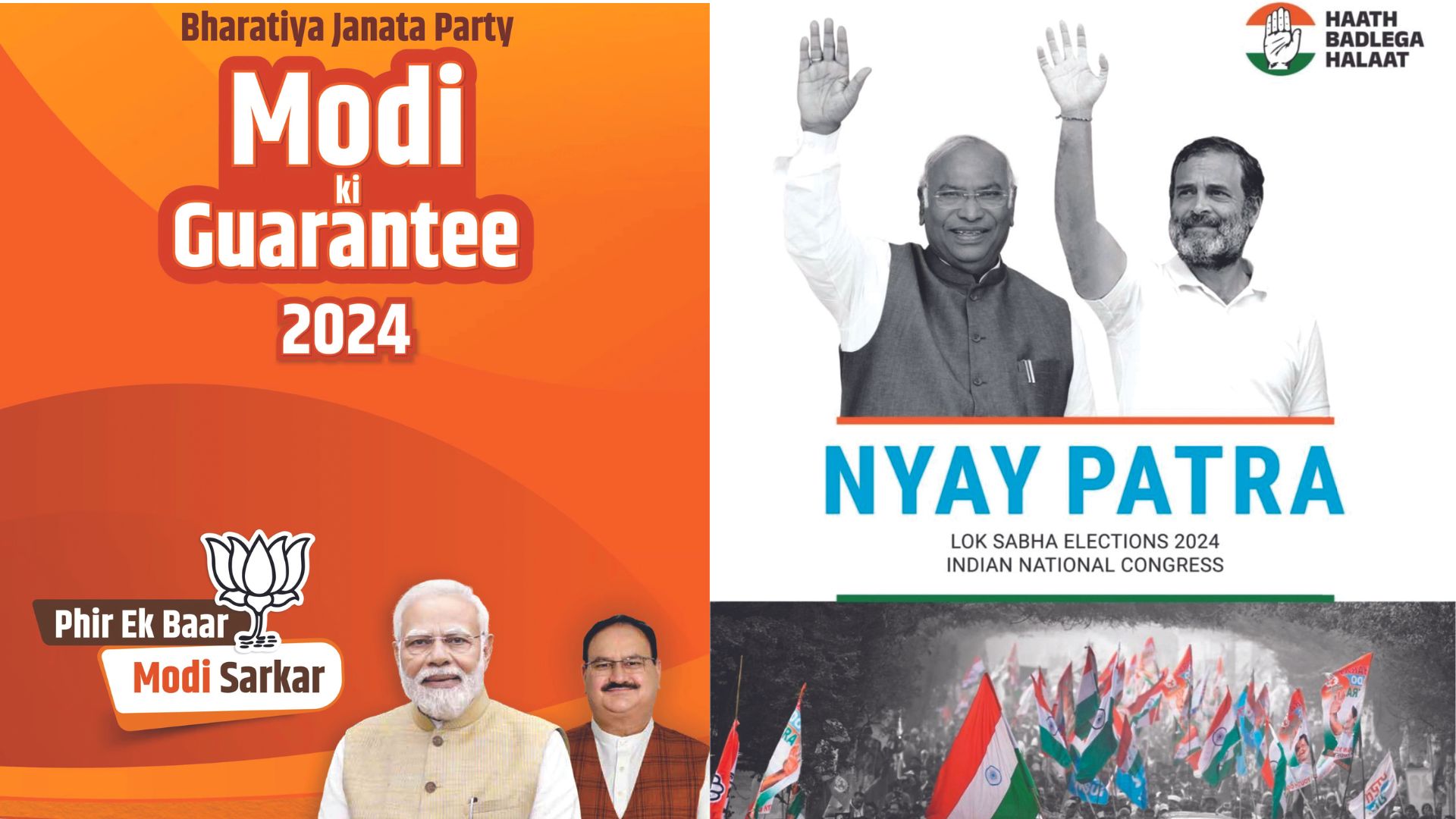


The elections are lifeline for democracy in India and also other parts of the world. The elections provide us opportunities to create public discourse on vision and plans for the development of nation and making future India. The battle for making sarkar in the 2024 is going on. All the parties — national or regional — have released their manifestos except Bahujan Samaj Party (BSP). In fact, BSP doesn’t prepare its manifesto. Mayawati, the BSP chief use to say ‘we do not believe in saying but doing’.
What manifestos means in electoral politics? Manifestos usually reflects the views, ideas and promises which leaders of the respective party speakers at various forums. It is in one way an organised presentation of their promises and political actions. Apart from these, manifestos also reflect the long term vision and developmental insights of the party.
The manifesto of Bhartiya Janata Party, named Sankalp Patra, released recently seems far ahead with its rivals in this context because it reflects micro and macro narratives of its vision and future plan of action. It narrates Prime Minister Narendra Modi vision of Vikasit Bharat, mission of making country the third largest economy, action plan for future India till 2047 an many other long-terms futuristic commitment which party proposed in its manifesto. It also stated mega developmental plans in infrastructure building such as roads, airports and many tourisms based developmental plans.
At the micro level, it proposed various support based developmental strategies such as social welfare schemes for poor, women, youths and peasants.
In fact, PM Modi tried to redefine the Indian society in these four categories which work as economic and occupational categories, beyond caste and religion. This concern of PM Modi to evolve political and developmental discourse beyond caste and religion reflected properly. But it also declared various developmental schemes for other backward castes (OBC), scheduled castes (SC) and tribal communities of the country.
It has also come up with huge welfare plans for the marginal occupational communities such as fisherman, shramik(labour) and Vishwakarmas. So, it is obvious in this Sankalp Patra that BJP is trying to discourage conventional identity-based populism in its political discourse and making efforts to encourage economic and occupation identities in its developmental vision.
The Congress party who is lead political party of I.N.D.I.A alliance also released its manifesto called ‘nyaya patra’. This manifesto has also made various promises for various social groups in India. It has proposed many social welfare and support schemes for youths, women, peasants, etc. With all these social support schemes, the Congress manifesto lacks broader long-term vision for strengthening the nation. If we analyse conceptual underpinnings of Congress manifesto it is based on various kinds of perceptions of injustices and proposed solution of these perceptions who may or may not a reality.
Second problem of this manifesto is that it tries to touches sense of primordial identities such as caste and religion. Its promise of national level caste-based census and abolishing cap of 50 per cent on reservations in jobs in the country. This promise of Nyay Patra of Congress, put it in the old conventional forms of social justice politics. This form of social justice politics evokes sense of casteness in the society which is a kind of subversion of neo-liberal vision of future India. So, it brings caste-based calculation which plans to bring Other Backward Castes (OBC) and Schedule caste (SC) under its political fold through reservation politics.
The Congress Nyay Patra also tries to engage with minority identity-based mobilization by ensuring their rights of maintaining identity-based markers such as separate dress, food habits, language etc.
So, Congress in its manifesto is trying to weave primordial identities and developmental social welfare concern together. As we know, the identity and development some time supplement each other but most of the time they contradict each other. The Congress manifesto at many places get jerks through such contradiction.
Many regional political parties such as Trinamool Congress and Rastriya Janata Dal (RJD) also talk about social support schemes for labours, Dalits, women etc. The TMC promises to scrap CAA, NRC and Uniform civil codes have appeared in its manifesto to influence minority communities such as Muslim. The Rastriya Janata Dal seems quite vocal for the ensuring jobs to the youths. It appears that the youth and women appeared central in the manifestos of all most all political parties. It shows the youths and women emerged as very powerful voting block in recent decades in the Indian politics.
The reading of the manifestos of various political parties released in this election, are not merely words but it also represents dynamics of shifting politics of electoral democracy in India. The manifestos also indicate changing aspirations and public desires of our society.